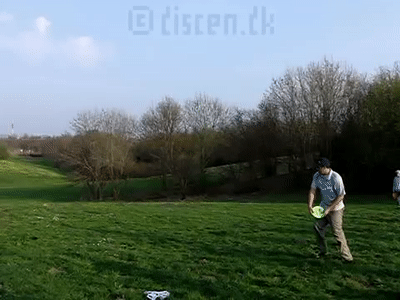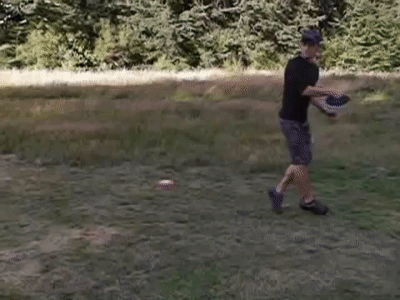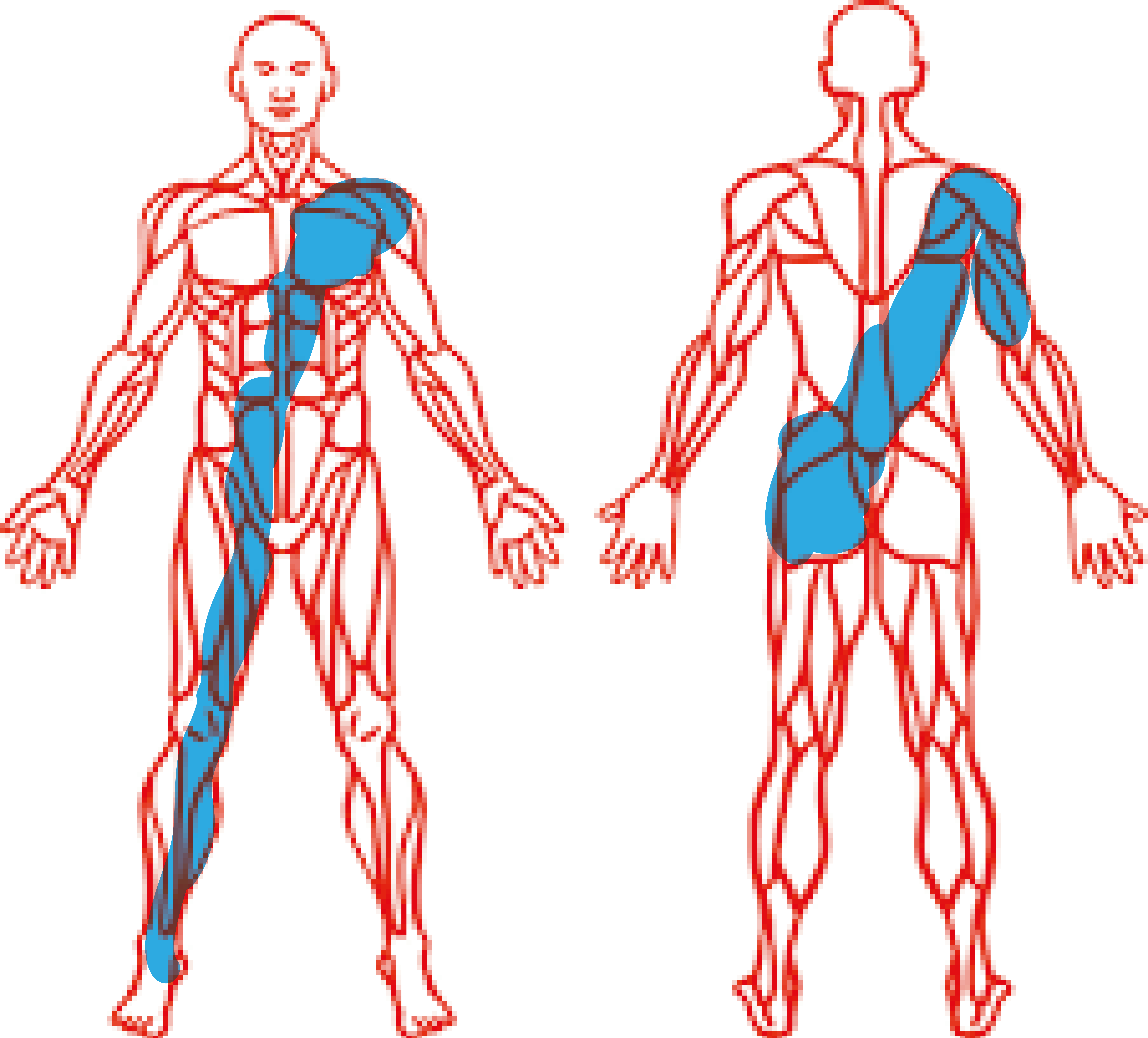First of all, thank you Sidewinder for luring me down the rabbit hole of the oblique swing.
(Post #44 in this thread: "Reachback Not Important?")
Secondly, I'm still learning, so bear with me. Maybe a few old timers can help me out by correcting and adding information?
I've had some huge aha-moments lately, mostly because of reading and watching a few short Youtube vids about the subject.
I'm not quite sure what to make of it yet though, but I know that for me it's going to be a game changer.
Why?
Even though I have been able to throw pretty far and decently accurate I have never felt the power travel through my body like this before.
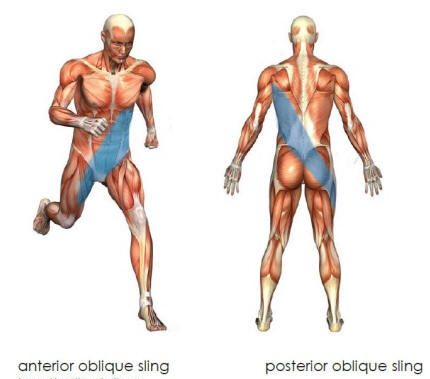
Following part is copy pasted from the top Google search result:
What Is The Oblique Sling
Your oblique sling is a line of musculature that runs from your shoulder to the contralateral side of your pelvis. In other words, right shoulder to left hip and left shoulder to right hip. This line of musculature is what rotates our pelvis into side lying. As mentioned, it is our bodies own personal whip. When looking at your torso, your oblique sling begins just above the hip at the external oblique, moves to the rectus abdominus, to the internal oblique, to the serratus, and into the pec on the opposite side. Picturing this line of muscle anatomically allows you to see its importance in generating rotation. It plays a huge role in all rotational sports. As a strength coach that works with mainly overhead and rotational athletes, this is an important concept to understand and continue to find new ways to address and fine tune.
Role Of The Oblique Sling In Throwing
Your oblique sling plays a massive role in the stretch reflex of throwing. Briefly, the stretch reflex is also known as the stretch shortening cycle. The stretch reflex involves eccentric lengthening of the muscles involved in the movement, which stores elastic energy, allowing us to generate power. An Eccentric contraction is followed by a period of amortization, which is the brief pause that allows for the transfer of the stored elastic energy to kinetic energy. This energy is released when the lengthened muscle contracts concentrically, finishing the stretch reflex.
When throwing, we enhance this stretch reflex by adding length to the movement, by separating between the shoulders and pelvis. This separation is known as the X factor. It creates a whip like effect, allowing you to throw far and hard. The longer the whip, the greater the speed.
Ok, I'm back.
Watching the vid above and trying it out got me feeling the oblique sling better than before. I've surely used it for throwing, but not heavily loaded.
I started doing a few twisted rows with a 4lb weight just to get a better feel of how the muscles in the posterior oblique sling work together. I may have been thinking about the throw all wrong for quite some time. My thoughts have been that the hips are one lever. The core is a spring. The shoulders are another lever. So you would need the core to be in a loaded state. I've know that there is more detail to it, but I haven't really felt the connection. Now I feel it like a resistance from the left hip wrapping up and around my back to anchor in my right shoulder and then continue out my right elbow.
Here's my before and after. I don't know how to show it visualized in any other way.
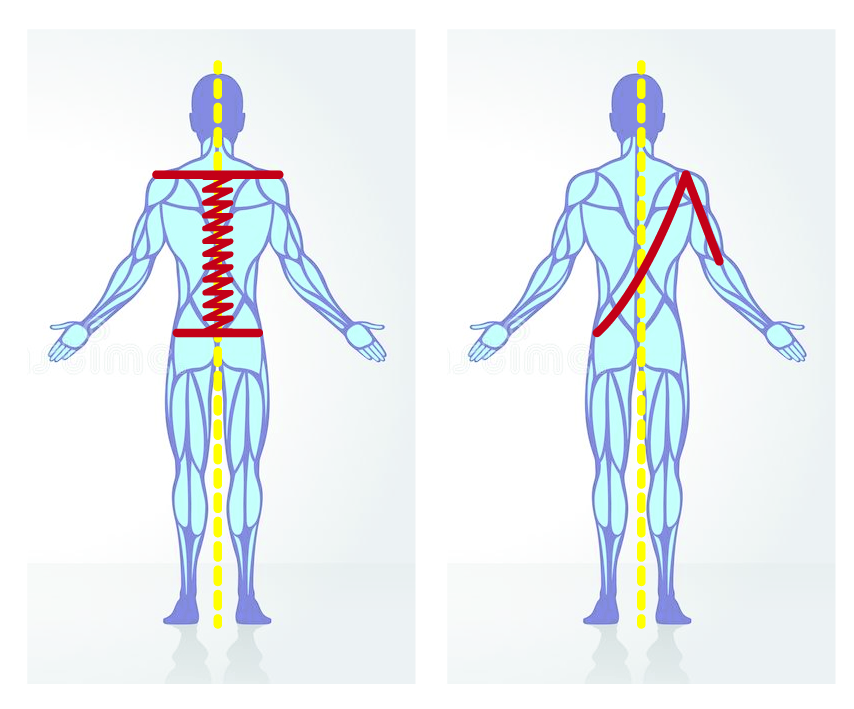
Now HERE is the real magic:
I wanted to feel what loading the sling in a disc golf throw would feel like, but my muscles wouldn't feel totally loaded just yet. And I couldn't really feel relaxed and athletic while doing it either.
So I used a resistance band and wrapped it around my back like this, but let it continue up to anchor around my right shoulder and out towards my right elbow. I attached one part to my left side belt loop and the other I tied around my right elbow.:
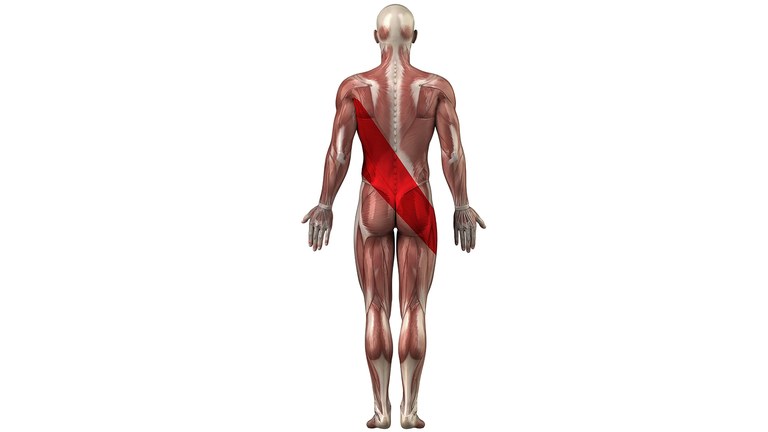
Some adjustments had to be made to get the feel and the resistance in the band. Then I loaded up to throw and focused on getting my right hip out of the way so that the left hip could move laterally and "wrap around" my CoG.
Then... BOOOM!
Everything just accelerated so hard that I thought I was gonna leave the ground. I tried a few more of these before getting rid of the resistance band. The feeling of it being loaded and un-loaded were now easy to move in to my muscles instead.
I have never REALLY felt the connection between rear hip and lead elbow before. Now I feel it like a resistance band stretching all over my back when throwing. It's loose when starting the X-step and getting pulled out when I start to move around the disc and lead with my left hip/butt, before getting released with easy power when I brace.
The hit is also so much easier to get right. If I line up correctly the disc will go exactly where my left hip and thigh is pointing (the direction of the X-step and the momentum).
(Post #44 in this thread: "Reachback Not Important?")
Secondly, I'm still learning, so bear with me. Maybe a few old timers can help me out by correcting and adding information?
I've had some huge aha-moments lately, mostly because of reading and watching a few short Youtube vids about the subject.
I'm not quite sure what to make of it yet though, but I know that for me it's going to be a game changer.
Why?
Even though I have been able to throw pretty far and decently accurate I have never felt the power travel through my body like this before.

Following part is copy pasted from the top Google search result:
What Is The Oblique Sling
Your oblique sling is a line of musculature that runs from your shoulder to the contralateral side of your pelvis. In other words, right shoulder to left hip and left shoulder to right hip. This line of musculature is what rotates our pelvis into side lying. As mentioned, it is our bodies own personal whip. When looking at your torso, your oblique sling begins just above the hip at the external oblique, moves to the rectus abdominus, to the internal oblique, to the serratus, and into the pec on the opposite side. Picturing this line of muscle anatomically allows you to see its importance in generating rotation. It plays a huge role in all rotational sports. As a strength coach that works with mainly overhead and rotational athletes, this is an important concept to understand and continue to find new ways to address and fine tune.
Role Of The Oblique Sling In Throwing
Your oblique sling plays a massive role in the stretch reflex of throwing. Briefly, the stretch reflex is also known as the stretch shortening cycle. The stretch reflex involves eccentric lengthening of the muscles involved in the movement, which stores elastic energy, allowing us to generate power. An Eccentric contraction is followed by a period of amortization, which is the brief pause that allows for the transfer of the stored elastic energy to kinetic energy. This energy is released when the lengthened muscle contracts concentrically, finishing the stretch reflex.
When throwing, we enhance this stretch reflex by adding length to the movement, by separating between the shoulders and pelvis. This separation is known as the X factor. It creates a whip like effect, allowing you to throw far and hard. The longer the whip, the greater the speed.
Ok, I'm back.
Watching the vid above and trying it out got me feeling the oblique sling better than before. I've surely used it for throwing, but not heavily loaded.
I started doing a few twisted rows with a 4lb weight just to get a better feel of how the muscles in the posterior oblique sling work together. I may have been thinking about the throw all wrong for quite some time. My thoughts have been that the hips are one lever. The core is a spring. The shoulders are another lever. So you would need the core to be in a loaded state. I've know that there is more detail to it, but I haven't really felt the connection. Now I feel it like a resistance from the left hip wrapping up and around my back to anchor in my right shoulder and then continue out my right elbow.
Here's my before and after. I don't know how to show it visualized in any other way.

Now HERE is the real magic:
I wanted to feel what loading the sling in a disc golf throw would feel like, but my muscles wouldn't feel totally loaded just yet. And I couldn't really feel relaxed and athletic while doing it either.
So I used a resistance band and wrapped it around my back like this, but let it continue up to anchor around my right shoulder and out towards my right elbow. I attached one part to my left side belt loop and the other I tied around my right elbow.:

Some adjustments had to be made to get the feel and the resistance in the band. Then I loaded up to throw and focused on getting my right hip out of the way so that the left hip could move laterally and "wrap around" my CoG.
Then... BOOOM!
Everything just accelerated so hard that I thought I was gonna leave the ground. I tried a few more of these before getting rid of the resistance band. The feeling of it being loaded and un-loaded were now easy to move in to my muscles instead.
I have never REALLY felt the connection between rear hip and lead elbow before. Now I feel it like a resistance band stretching all over my back when throwing. It's loose when starting the X-step and getting pulled out when I start to move around the disc and lead with my left hip/butt, before getting released with easy power when I brace.
The hit is also so much easier to get right. If I line up correctly the disc will go exactly where my left hip and thigh is pointing (the direction of the X-step and the momentum).


